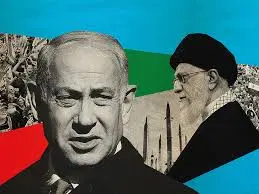Uncover the surprising origins of the Iran-Israel conflict, from unlikely allies to bitter rivals post-1979. Explore the initial triggers, proxy wars, and retaliations that shaped this enduring geopolitical struggle.
Overview
The headlines often scream of escalating tensions, proxy wars, and direct confrontations between Iran and Israel, painting a picture of a relentless and modern-day rivalry. Yet, to truly understand the multifaceted nature of this conflict, one must peel back the layers of history, examining its surprising origins and the pivotal moments that shaped the antagonistic relationship we witness today. This isn't merely a clash of present-day interests but a deeply entrenched geopolitical struggle with ideological, security, and regional power dimensions.
From Unlikely Allies to Bitter Adversaries: When Did the Iran-Israel Conflict Begin?
Perhaps surprisingly to some, the relationship between Iran and Israel was not always one of animosity. In the years following Israel's establishment in 1948, under the Pahlavi monarchy, Iran was one of the few Muslim-majority nations to establish covert diplomatic relations with the new state. Both countries shared common strategic interests, primarily a concern over Arab nationalism and Soviet influence in the region. Israel, in particular, valued Iran as a non-Arab ally in a hostile neighborhood, while Iran saw Israel as a potential partner in modernization and intelligence sharing. This period of quiet cooperation, though never fully public, laid the groundwork for a pragmatic, albeit fragile, relationship.
The fundamental shift, however, arrived with the 1979 Islamic Revolution in Iran. This seismic event fundamentally reshaped Iran's identity and foreign policy. The new revolutionary government, led by Ayatollah Ruhollah Khomeini, adopted a staunch anti-Zionist stance, viewing Israel as an illegitimate occupier of Muslim lands and a Western outpost in the Middle East. The rhetoric of "liberating Palestine" and "wiping Israel off the map" became central to the Islamic Republic's ideology. This ideological transformation, combined with Iran's ambition to become the dominant regional power, marked the true beginning of the direct, overt conflict with Israel.
The First "Blows": Who Did What First and the Spiral of Retaliation
Defining the "first" act of aggression in such a complex, ideologically charged conflict can be challenging, as actions are often perceived differently by each side. However, key events in the early post-revolution years clearly illustrate the initiation of a hostile relationship.
Iran's Initial Moves (Post-1979 Revolution):
Following the 1979 revolution, Iran's strategic shift was immediate and profound:
- Severing Diplomatic Ties: Iran formally cut all diplomatic and commercial ties with Israel, effectively ending the covert cooperation. The Israeli mission in Tehran was famously handed over to the Palestine Liberation Organization (PLO).
- Ideological Warfare & Support for Anti-Israel Groups: Iran began actively supporting various Palestinian and Lebanese militant groups, most notably Hezbollah in Lebanon and various Palestinian factions in the Palestinian Territories. This proxy warfare became a cornerstone of Iran's strategy to challenge Israel. This support, which included financial aid, training, and weaponry, was perceived by Israel as a direct act of aggression and a significant threat to its security.
- Rhetorical Hostility: Iranian leaders consistently used inflammatory rhetoric against Israel, calling for its demise and characterizing it as a cancerous tumor in the region. While rhetorical, this set a deeply hostile tone.
Israel's Early Responses and Retaliations:
Israel, observing Iran's ideological pivot and its tangible support for militant groups on its borders, responded with its own security measures and, at times, preemptive actions:
- Targeting Iranian Assets and Proxies: Israel's retaliations primarily focused on curbing Iran's influence and the capabilities of its proxies. This included military operations against Hezbollah in Lebanon, often involving airstrikes and ground incursions aimed at degrading their military infrastructure and preventing missile build-ups.
- Covert Operations: Speculation abounds regarding covert Israeli operations aimed at disrupting Iran's nuclear program and its broader military capabilities. While rarely confirmed, these operations are widely believed to have begun in the early stages of the conflict, acting as a form of deterrence and preemption against perceived threats.
- International Diplomacy: Israel also engaged in extensive international diplomacy to highlight the perceived Iranian threat, particularly concerning its nuclear ambitions and support for terrorism.
The Escalation Continues: A Conflict Defined by Proxies and Red Lines
The initial phase of the Iran-Israel conflict established a pattern that largely persists today: a direct ideological confrontation manifested through proxy conflicts, intelligence warfare, and a constant cat-and-mouse game over regional influence and strategic capabilities. The nuclear issue has since added another volatile layer, pushing the rivalry to new levels of complexity and global concern.
The absence of direct, full-scale state-on-state warfare between Iran and Israel does not diminish the intensity of their rivalry. Instead, it highlights a calculated strategy by both sides to wage conflict through asymmetric means, each probing the other's red lines while seeking to avoid a catastrophic direct confrontation. Understanding these origins is paramount to comprehending the enduring dynamics of one of the Middle East's most dangerous and unpredictable geopolitical rivalries.
